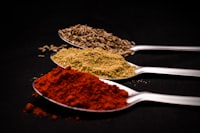Ayurvedic Treatments for Madhumeha (Diabetes)
In Ayurveda, Madhumeha is considered one of the most serious forms of Prameha (urinary disorders), and it corresponds to diabetes mellitus in modern medicine. The treatment aims at balancing the body's Doshas—Vata, Pitta, and Kapha—improving the digestive fire (Agni), detoxifying the system, and rejuvenating the body's tissues (Dhatus). Ayurvedic treatment for Madhumeha involves a combination of therapies, herbal remedies, dietary modifications, and lifestyle changes.
1. Panchakarma (Detoxification Therapy)
Panchakarma is a vital aspect of Ayurvedic treatment, used to detoxify and cleanse the body of accumulated toxins (Ama). It helps restore the balance of Doshas and enhances metabolism. The specific therapies for Madhumeha include:
Vamana (Therapeutic Emesis): This treatment is used to expel excess Kapha from the body by inducing vomiting. It helps cleanse the respiratory and gastrointestinal systems, which may be beneficial for Type 2 diabetes, where Kapha plays a dominant role.
Virechana (Therapeutic Purgation): Purgation therapy cleanses the liver and intestines, balancing Pitta dosha and helping to eliminate toxins. It also aids in reducing blood sugar levels.
Basti (Medicated Enema): Basti is used to balance Vata dosha by administering herbal decoctions or oils through the rectum. It helps in regulating the nervous system and improving digestion, which is often impaired in diabetes.
Raktamokshana (Bloodletting Therapy): Bloodletting is a procedure used to purify the blood, which may help reduce complications related to diabetes, such as skin issues and poor circulation.
2. Ayurvedic Herbal Remedies
Ayurveda uses a variety of herbs that possess anti-diabetic, hypoglycemic, and rejuvenative properties to help manage Madhumeha. Some of the most commonly used herbs are:
Gudmar (Gymnema sylvestre): Known as the “sugar destroyer,” Gudmar reduces sugar absorption in the intestines, helps regulate insulin production, and curbs sugar cravings.
Bitter Gourd (Karela): Bitter gourd contains compounds that mimic insulin, helping to reduce blood sugar levels. It is highly beneficial for both Type 1 and Type 2 diabetes.
Vijaysar (Pterocarpus marsupium): This herb has anti-hyperglycemic properties that help in lowering blood glucose levels. Vijaysar is also used in Ayurveda to regenerate pancreatic cells.
Fenugreek (Methi): Fenugreek seeds are rich in soluble fiber, which helps in slowing down the absorption of sugars in the bloodstream. It also improves glucose tolerance.
Turmeric (Haridra): Turmeric contains curcumin, which has anti-inflammatory and antioxidant properties. It helps in controlling insulin resistance and reducing inflammation in diabetic patients.
Amalaki (Indian Gooseberry): Rich in Vitamin C and antioxidants, Amalaki strengthens the immune system and helps in regulating glucose metabolism.
Neem (Azadirachta indica): Neem leaves are known for their bitter taste and have anti-diabetic properties. They help purify the blood and reduce blood sugar levels.
Jambu (Jamun or Indian Blackberry): The seeds of the Jamun fruit are widely used in Ayurveda to regulate insulin production and manage blood sugar levels.
3. Ayurvedic Dietary Guidelines (Ahara)
A proper diet is crucial in managing Madhumeha. Ayurveda emphasizes consuming foods that balance Kapha and Pitta while enhancing Agni (digestive fire). The dietary guidelines include:
Include Bitter and Astringent Tastes: Foods that are bitter, astringent, and pungent help balance Kapha and reduce blood sugar levels. Bitter gourd, neem leaves, fenugreek, turmeric, and green leafy vegetables are recommended.
Avoid Sugary and Processed Foods: Refined sugars, processed foods, dairy products, and heavy, oily foods that increase Kapha should be avoided.
Eat Whole Grains: Whole grains like barley, millet, and quinoa are preferred over refined carbohydrates. Barley is especially beneficial for diabetes as it has a low glycemic index.
Increase Fiber-Rich Foods: Consuming fiber-rich vegetables and legumes helps in managing blood sugar by slowing down glucose absorption.
Drink Herbal Teas: Herbal teas made from cinnamon, fenugreek, and ginger can improve digestion and regulate blood sugar levels.
4. Ayurvedic Lifestyle Recommendations (Vihara)
Ayurveda emphasizes the importance of a balanced lifestyle in the management of Madhumeha. The lifestyle recommendations include:
Regular Physical Activity: Daily exercise, yoga, and walking are essential to balancing Kapha and improving insulin sensitivity. Moderate activities like walking for 30 minutes a day help regulate metabolism and blood sugar levels.
Yoga and Pranayama: Specific yoga asanas such as Suryanamaskar (Sun Salutation), Bhujangasana (Cobra Pose), and Paschimottanasana (Seated Forward Bend) are beneficial for controlling diabetes. Pranayama (breathing exercises) like Kapalbhati and Anulom Vilom enhance oxygenation, reduce stress, and improve glucose metabolism.
Stress Management: Stress aggravates Vata and Pitta, which can worsen diabetes. Meditation, deep breathing exercises, and relaxation techniques are essential to calm the mind and nervous system.
Sleep Routine: A regular sleep pattern of 6–8 hours at night is crucial for proper metabolic function and maintaining blood sugar levels.
5. Rejuvenation Therapy (Rasayana)
Rejuvenation therapy in Ayurveda, also known as Rasayana, aims to nourish and rejuvenate the body’s tissues. In the case of diabetes, Rasayana therapy helps regenerate and strengthen the pancreatic cells and improve overall vitality. Commonly used rejuvenative herbs include:
Shilajit: A potent Rasayana that helps improve metabolism and vitality.
Ashwagandha: Reduces stress, improves energy, and supports metabolic health.
Shatavari: Nourishes tissues and balances Pitta.
6. Use of Ayurvedic Formulations
Ayurvedic classical formulations that are commonly used in the treatment of Madhumeha include:
Nisha Amalaki Churna: A combination of turmeric and Indian gooseberry that is used for controlling blood sugar levels.
Chandraprabha Vati: A classical Ayurvedic formulation that supports urinary health and helps manage diabetes.
Vasant Kusumakar Ras: A rejuvenating herbal-mineral formulation used in the treatment of diabetes and its complications.
Triphala: A combination of three fruits (Amalaki, Bibhitaki, and Haritaki) that improves digestion and helps in detoxification.
Conclusion
Ayurvedic treatments for Madhumeha (diabetes) focus on a holistic approach by balancing the Doshas, detoxifying the body, enhancing digestion, and rejuvenating tissues. The treatment plan involves a combination of Panchakarma therapies, herbal remedies, a balanced diet, lifestyle modifications, and yoga. The goal is to restore balance in the body and maintain long-term health by addressing the root causes of diabetes, rather than just managing the symptoms.
General Guidelines for Using Ayurvedic Medicines for Diabetes:
Consultation: Always consult with a qualified Ayurvedic practitioner before starting any new treatment.
Dosage: Follow the recommended dosage instructions provided by your practitioner or on the supplement packaging.
Lifestyle: Combine Ayurvedic treatments with a balanced diet, regular exercise, and a healthy lifestyle for optimal results.
Monitoring: Regularly monitor blood sugar levels to track the effectiveness of the treatment and adjust as needed.
These remedies are often used in conjunction with conventional treatments to manage diabetes more effectively.






ayuraft.com© 2024. All Rights Reserved.
DISCLAMER: All information provided on this website is not intended to diagnose,prevent treat or cure any disease.Always consult a licensed medical professional for your health condition. READ MORE..
By using,readig or accessing any page on this website,you agree that you have read, understood and will abide by the terms and conditions of USE,DISCLAMER and PRIVACY POLICY.


